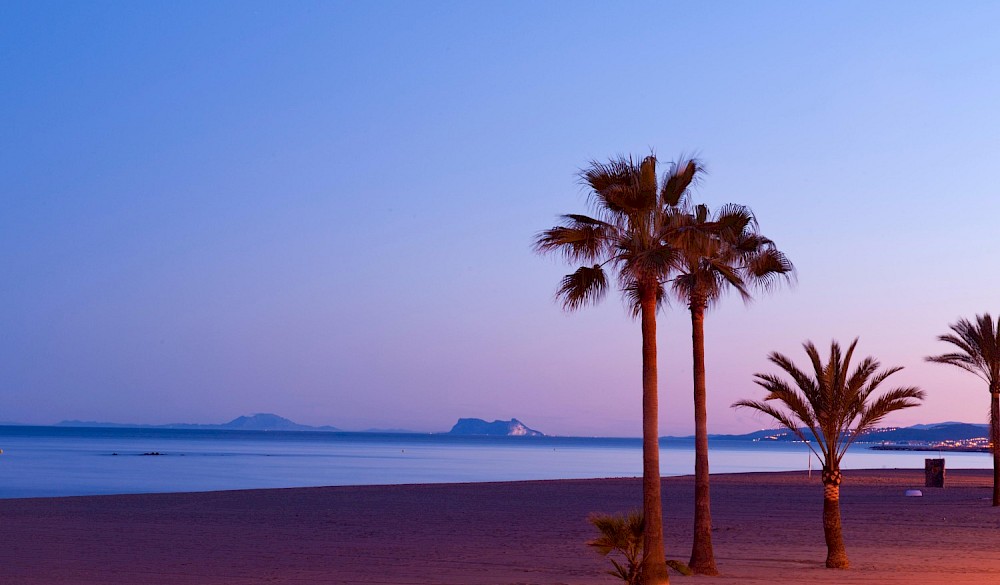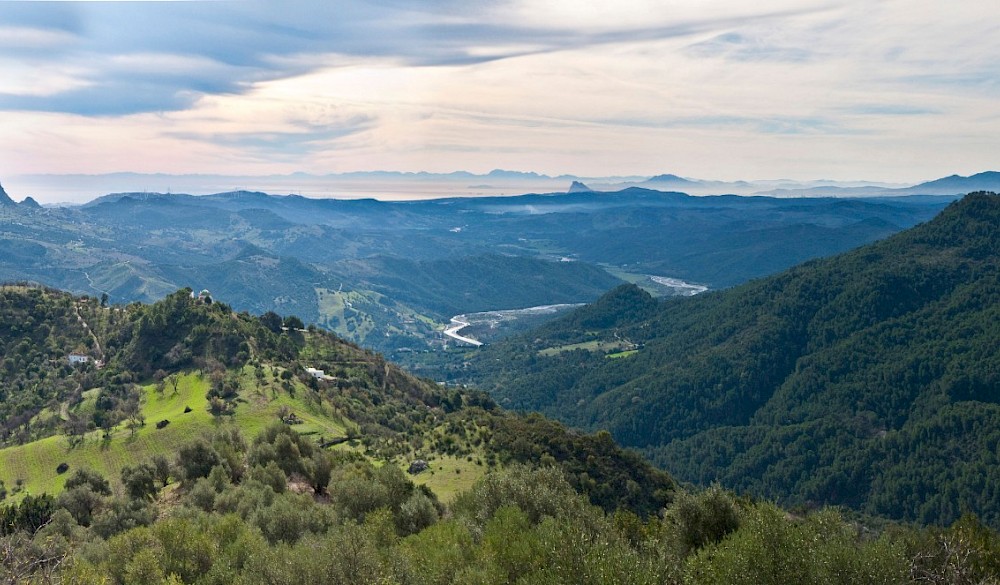Equestrian Sports
Andalusia is one of the leading global reference points for all things associated with the world of horses. Andalusia is home to excellent breeds, and has a host of stud farms for Arabian, Anglo-Arabian, Hispano-Arabian, English horses... These farms train and prepare them for different types of dressage.
However, the most emblematic horse in Andalusia is the Spanish thoroughbred or Andalusian horse. The exceptional qualities and feats of this breed are often reflected in the annals of history. The Romans mention the beautiful, docile, brave horses of Hispania, and it was Philip II of Spain who established the definitive bases for what would be the Spanish thoroughbred, creating the Royal Cordoba Cavalry, which brought together the best horses from the banks of the Guadalquivir River, as well as the "Royal Stud Farm" (now known as the "National Stud Farm").
Nowadays, these horses must pass stringent controls to certify their authenticity, and they have been strategically crossed with other autochthonous breeds to create new breeds such as "lipizzaner" and "paso fino".
Their physical characteristics are as follows: Well-proportioned head of medium length; lightly arched, muscular neck of medium size and length; well-proportioned, robust trunk; flexible back, short and sufficiently broad in relation to the animal's overall body structure; rounded hindquarters, lightly inclined; low-slung tail with agile, elevated, harmonious, rhythmic movement. In short, this is a magnificent breed that is also a well-balanced horse, with harmony of form, intelligent and willing in work, docile, obedient, noble and resilient.
Where to go horse riding
Although the birthplace of the Spanish thoroughbred horse is Jerez de la Frontera, you will find many places to enjoy these magnificent animals in all the provinces of Andalusia. There are many stud farms, stables and riding schools that are home to these elegant, internationally renowned horses. At some of these places you can even find accommodation and excellent facilities.
These establishments are located on farms, estates or at hotels. You can often ride on the estate, go on outings of different lengths, make use of pony clubs for the little ones, go on rides in horse-drawn carriages, take riding classes at any level or watch equestrian and carriage displays. If you have your own horse, you can also take classes in different styles of classical and country dressage. Horses are even available for purchase.
Furthermore, if you want to get to know the world of horses better and admire magnificent specimens, in Andalusia you will find major horse shows such as SICAB "The International Horse Show" (in November, Seville), which is considered the largest, best horse show dedicated to the Spanish thoroughbred on the world calendar.
If you really want to enjoy the skill of these pure breed horses, then be sure to visit the Royal Andalusian School of Equestrian Art in Jerez to see the show, "How Andalusian Horses Dance" - a real equestrian ballet with Spanish music, where the horses are the true stars.
Andalucia Horse History
The world's most aristocratic equine population owes its fame to the Andalusian horse, along with the Arab and, much later, the Thoroughbred.
Its history goes back long before the birth of Christ - to 200 BC, at the time of the Roman Conquests in and around Spain. Roman writers praised the native Spanish horses' qualities, which were recognised by Spain's Moorish conquerors, who naturally cross-bred them with their own Arab and Berber breeds.After the Moors were driven from Spain in the 15th Century, these noble Spanish creatures enjoyed a period of great popularity, influencing almost all other American and European horse breeds.
Not only were they taken by the Spanish conquistadors to the New World in the Americas, but they laid the foundation of the Frederiksborg, the royal horse of Denmark; the Neapolitan horse, when Naples was under Spanish rule from 1504 to 1713; the Austrian Kladruber, and some of the British breeds, notably the Cleveland Bay, the Hackney, the Connemara pony of Ireland and possibly the Welsh Cob.
Direct descendants of the Andalusian horse are the Lippizaners of the Spanish Riding School in Vienna, established in 1572 as an adjunct to the Court in order to educate their nobility in the equitational arts. It was called the Spanish Riding School because right from its formation only Spanish stallions were used there.
The Lippizaners take their name from the stud at Lippiza, near Trieste, then part of the Austrian empire. It was founded by Archduke Charles 11, in 1580, who had 9 stallions and 24 mares brought there from Spain.
This is the horse that became "The very cornerstone of classical riding." The features that made this caballo de pura raza española - horse of pure Spanish breed - so highly sought after, are its balletic elegance, high head carriage, short arched neck, silky flowing mane, compact body and wonderful proportions.
The manes of mares are usually clipped in Spain; only the stallions are allowed to display the full splendour of theirs. About 50 per cent of Andalusians are usually grey or white, the rest being bay or black. Chestnuts or piebalds are excluded from the stud book.
These attributes are combined with a fiery intelligence, strangely at odds with it's affectionate and docile temperament. It is considered to be the ideal haute école parade and carriage horse. It is perhaps somewhat surprising, therefore, that its presence outside Spain is not more widespread today.
ref: Andalucia






